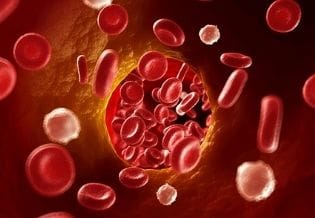About the Journal of Thrombosis and Treatments
Advancing the molecular and mechanistic understanding of thrombotic disorders, bleeding pathophysiology, and vascular biology through peer-reviewed pathophysiological research.
Illuminating the Molecular Architecture of Thrombotic Disease
The Journal of Thrombosis and Treatments (JTT) serves as a premier forum for pathophysiological investigations into thrombosis, hemorrhagic disorders, and vascular biology. Our mission centers on elucidating the molecular mechanisms, cellular pathways, and biochemical processes that govern hemostatic balance and drive disease states.
Published by Open Access Pub, JTT provides an international platform for researchers investigating the fundamental biology of coagulation cascades, platelet function, endothelial signaling, fibrinolytic systems, and vascular remodeling. We prioritize mechanistic depth, experimental rigor, and translational potential — bridging bench discoveries with biomarker development and molecular target identification.
Through open access dissemination, JTT ensures that breakthrough insights into thrombotic pathophysiology reach hematologists, vascular biologists, molecular pathologists, and pharmaceutical scientists worldwide without subscription barriers.
JTT publishes original investigations, systematic reviews, and methodological innovations that deepen mechanistic understanding of thrombotic and hemorrhagic pathophysiology. We emphasize molecular-level inquiry, cellular mechanisms, pathway analysis, and biomarker characterization — the foundational knowledge that informs future therapeutic development.
Our scope encompasses laboratory studies employing cell culture models, animal disease models, ex vivo human tissue analysis, computational biology, systems-level pathway mapping, and translational biomarker discovery. We welcome research that interrogates disease mechanisms at molecular, cellular, tissue, and organ-system levels.
Molecular regulation of procoagulant factors, enzymatic activation pathways, tissue factor biology, thrombin generation dynamics, and fibrin polymerization processes.
Platelet activation signaling, adhesion receptor biology, granule secretion mechanisms, integrin function, thromboxane pathways, and platelet-endothelial interactions.
Endothelial barrier integrity, nitric oxide signaling, von Willebrand factor biology, thrombomodulin regulation, vascular inflammation pathways, and glycocalyx alterations.
Plasminogen activation pathways, tissue plasminogen activator (tPA) regulation, plasminogen activator inhibitor-1 (PAI-1) biology, clot resolution mechanisms, and fibrinolytic balance.
Neutrophil extracellular traps (NETs), immunothrombosis mechanisms, complement activation in thrombosis, cytokine-mediated coagulation activation, and inflammatory mediator signaling.
Molecular mechanisms of deep vein thrombosis, pulmonary embolism pathophysiology, stasis-induced coagulation activation, and venous valve dysfunction.
Atherosclerotic plaque rupture biology, shear stress effects on thrombosis, arterial remodeling pathways, and coronary/cerebral thrombotic mechanisms.
Molecular basis of hemophilia, von Willebrand disease mechanisms, platelet function disorders, inherited coagulopathies, and acquired bleeding pathophysiology.
Novel molecular markers of thrombotic risk, circulating microparticle biology, soluble coagulation factor measurement, proteomic profiling, and metabolomic signatures of hemostatic activation.
Capillary-level coagulation mechanisms, microvascular thrombotic syndromes, thrombotic microangiopathy pathways, and organ-specific microcirculatory dysfunction.
Protein C/protein S pathways, antithrombin biology, tissue factor pathway inhibitor (TFPI) mechanisms, and natural anticoagulant deficiency states.
Thrombophilia genetics, factor V Leiden mechanisms, prothrombin mutations, MTHFR polymorphisms, and epigenetic regulation of hemostatic genes.
Journal of Thrombosis and Treatments offers pathophysiology researchers a specialized publishing home that values mechanistic rigor, experimental clarity, and translational relevance. Our editorial board comprises internationally recognized experts in coagulation biology, vascular pathophysiology, and thrombosis research who ensure each manuscript receives thorough, constructive peer review.
- Specialized Pathophysiology Focus: Unlike broad clinical journals, JTT prioritizes molecular mechanisms, cellular pathways, and disease model research that illuminates how thrombotic disorders develop and progress.
- Rigorous Methodological Review: Our reviewers evaluate experimental design quality, model validity, statistical robustness, and mechanistic interpretation depth.
- Rapid Publication Timeline: Efficient editorial workflows ensure timely dissemination of mechanistic discoveries without compromising peer review quality.
- Open Access Reach: Creative Commons licensing maximizes global visibility, citation potential, and integration into research databases and educational materials.
- Multidisciplinary Integration: We welcome studies bridging hematology, vascular biology, immunology, biochemistry, molecular genetics, and systems biology.
- Data Transparency Support: JTT encourages supplementary data deposition, protocol sharing, and methodological detail that enables reproducibility and meta-analysis.
JTT streamlines manuscript submission through a user-friendly online portal designed for busy researchers. Authors receive prompt acknowledgment, transparent communication throughout peer review, and constructive feedback regardless of publication decision.
We accept original research articles, review papers, mechanistic case studies with molecular analysis, methodological innovations, and brief communications reporting significant mechanistic findings. Manuscripts should emphasize experimental evidence, pathway analysis, molecular characterization, or biomarker validation.
- Prepare manuscripts according to JTT's author guidelines, including structured abstracts highlighting mechanistic insights
- Submit via the online manuscript portal with cover letters articulating novelty and pathophysiological significance
- Receive initial editorial assessment within 5-7 business days
- Engage with expert peer reviewers who provide mechanism-focused feedback
- Revise manuscripts with point-by-point responses to reviewer comments
- Achieve rapid online publication upon acceptance with DOI assignment and immediate indexing
All JTT content is published under Creative Commons Attribution (CC BY 4.0) licensing, enabling unrestricted sharing, adaptation, and integration into derivative works with proper attribution. This open access model accelerates knowledge dissemination and maximizes research impact across academic, pharmaceutical, and diagnostic sectors.
JTT articles are indexed in major biomedical databases including Google Scholar, ResearchGate, and specialized hematology repositories, ensuring discoverability by thrombosis researchers, vascular biologists, and translational scientists worldwide. Our digital infrastructure supports DOI registration, CrossRef integration, and automatic citation tracking.
Advance Thrombosis Pathophysiology Research
Join the global community of researchers unraveling the molecular mysteries of thrombotic and hemorrhagic disorders. Submit your mechanistic discoveries to JTT and contribute to the foundational knowledge that drives therapeutic innovation.


